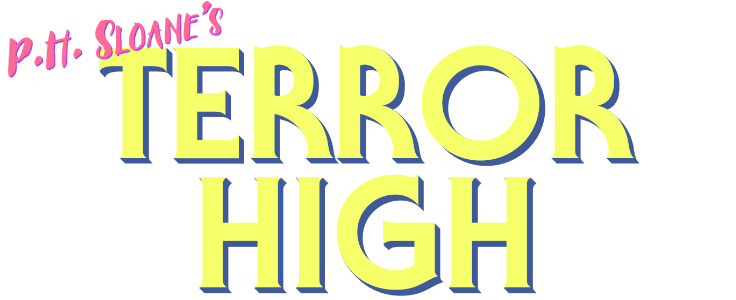In game design, as in life, we are presented with choices.
From the start, I knew Terror High was going to be a 2D game. This was dictated both by the engine (Clickteam Fusion 2.5, for those curious) as well as my own skills as an artist. But what kind of 2D? When it comes to perspectives, there are several to choose from*.

Would I go with isometric (e.g. Shadowrun on the SNES or the first two Fallouts)? Or maybe a top-down orthographic perspective, also referred to as a 3/4 view (e.g. A Link to the Past or Chrono Trigger)? Or perhaps top-down bird’s eye† (e.g. Hotline Miami)?
I eventually settled on top-down orthographic. Isometric was tempting, as it provides more visual real estate (with both southeast and southwest facing walls visible) and solves some of the issues presented by top-down. However, isometric is not without its own issues. That additional visual real estate translates to additional workload. More assets are necessary, and the perspective can be tricky to draw for when items are not composed of straight lines. Furthermore, the math for displaying objects in the correct Z axis order (i.e. depth) is trickier. All in all, top-down was going to prove less of a headache for my “simple” project.
But even top-down proved to have its share of headaches. That absence of visual real estate means only south-facing walls are visible to the player (unless you engage in some Earthbound-style visual trickery). This leads to certain problems, like…um, so, how you gonna let the players know where the doors are, dude?
Many older games get around this problem by simply not having doors on any non-south-facing wall, or having doors on the obscured walls act more as secret rooms than legitimate locations. Others leave visual clues, such as paths, door mats, or shop signs indicating such non-visible doors exist.
I didn’t want to try to get away with only having south-facing doors, as I want Terror High’s locations to feel real and inhabit a realistic space (i.e. unlike a TARDIS, areas will be exactly as big on the inside as on the outside). So I needed to figure out how I could clearly communicate to players where they were and where they could go. I needed to develop a consistent visual language.
You see, visual communication is at the heart of game design. When done right, the designers can tell player where and how they can interact with the world, and maybe even steer them in the right direction, using visual clues based on a consistent visual vernacular. Sometimes this is as simple as Red‡ Barrels = Shoot Go Boom, and sometimes it’s more subtle, such as a streetlight or a torch drawing your eye to the next point of interest.
Point being: I had to figure out what I was gonna do about the damn doors.
I went through a few different ideas, to varying degrees of success. My first idea was my weakest:

Pro: Without walls obscuring anything, the player could see the character and doors without issue. Con: It looks dumb as hell for a door to be hanging out all by its lonesome.
Pro: It doesn’t look as dumb as the previous idea. Con: More than half of the hallway is obscured.
Pro: Obscures far less of the play area. Con: I’m not sure I like it? ¯\_(ツ)_/¯
These were all valid solutions, but none of them really sat right with me. Transparent walls was the best of those options, but even that, I felt, was lacking. Iterating the idea a little further, I decided to try taking a page out of the original Fallout‘s book and introduce a sort of “porthole” transparency:
It’s not perfect, but so far I like it. It still has the downside of obscuring a good chunk of the hallway, but gives the player the option of exploring if necessary. Now, this may not end up being its final form; it may end up that gameplay concerns down the line dictate another solution. And that’s fine, ’cause that’s okay. Game design is about iteration, and trade-offs, and thinking way more about walls and doors than you ever thought you would in a non-carpentry trade.
Thank you for sticking it out to the end of this post all about walls and doors. Please join me next week when I go into the game design challenges inherent in breakfast nooks.
Haha, just kidding, we’re probably gonna talk about the still-carpentry-adjacent subject of tiles.
* For more information on video game perspectives, check out this detailed rundown on Significant Bits.
† Obviously not top-down bird’s eye, because this perspective is garbage.
‡ Although best practices would dictate that, for accessibility purposes, a designer not rely solely on a specific color to indicate importance. In this example, some kind of hazard symbol on the barrel would be an ideal secondary indicator.



